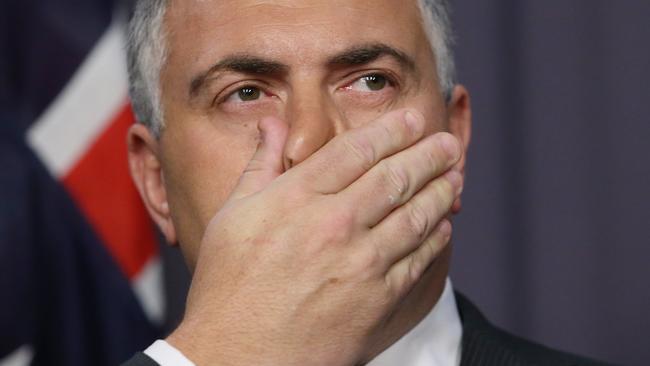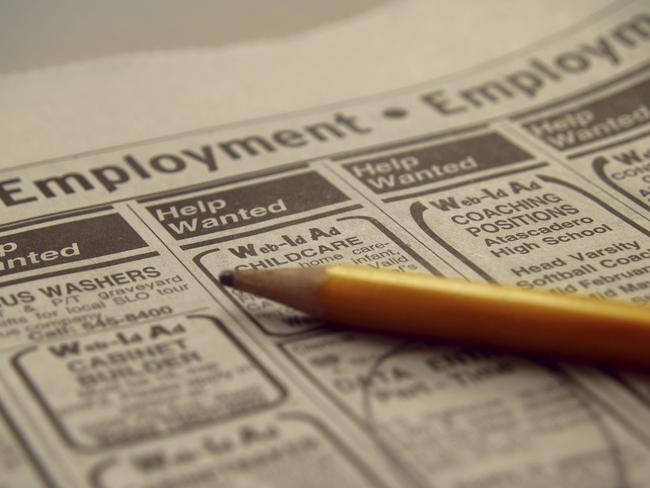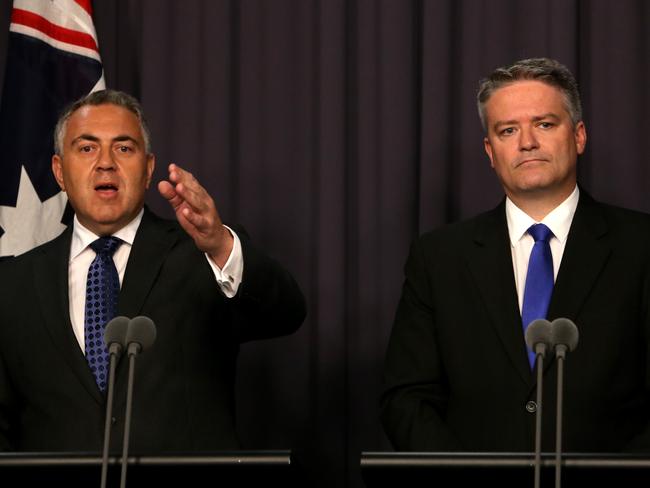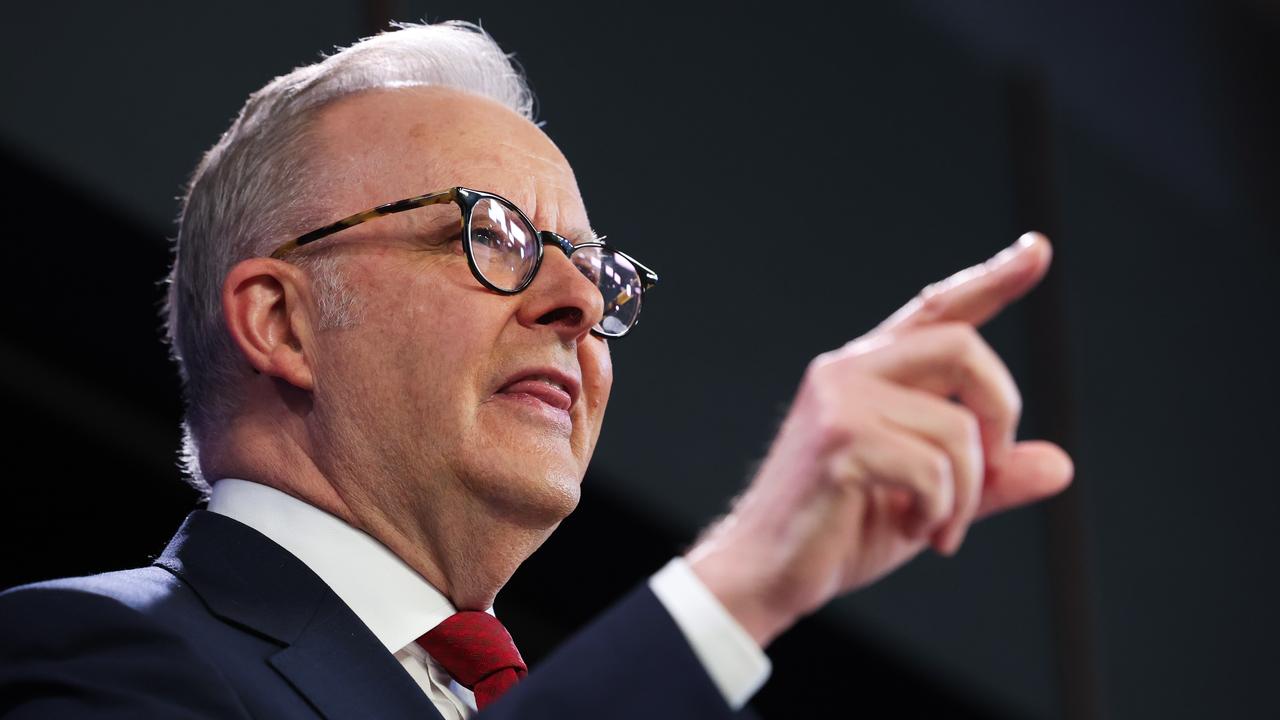The Australian financial position is in worse position than at the May budget
WITH everything happening yesterday, there was an important piece of news you may have missed. Here are four numbers you need to know.

AMID all the drama of the Sydney siege yesterday, there was another piece of important news you may have missed — the state of Australia’s finances.
Yesterday, Treasurer Joe Hockey and Finance Minister Mathias Cormann released the Mid-Year Economic and Fiscal Outlook, an update about the state of the country’s coffers following on from the federal budget in May.
Here are four numbers you need to know:
$40.4 BILLION
The deficit forecast for the federal budget has now blown out to $40.4 billion. This is significantly higher than the $29.8 billion deficit predicted by Mr Hockey in May, at the time of the budget. This means that by the 2017/18 financial year, the deficit is expected to be $11.5 billion, rather than the $2.8 billion that was previously flagged.

Mr Hockey has blamed the deficit blowout on two factors. The first is how much tax the government had expected to collect over the forward period. There has been a 30 per cent collapse in the price of iron ore since May, while wage growth has been weaker than expected. As a result, the government will collect $31.6 billion less in taxes over the next four years.
The second factor Mr Hockey said was responsible for the blowout is the Senate’s refusal to pass key government budget proposals including higher education fee increases and a Medicare co-payment. Mr Hockey said the Senate’s actions have will cost $10.6 billion over the next four years.
6.5 PER CENT
Unemployment is expected to reach a new 12-year high in the 2014/15 financial year. The government’s outlook also predicted the jobless rate will remain at that level throughout the 2015/16 financial year, before declining to 6 per cent and then 5.75 per cent in the two following years.

A 6.5 per cent jobless rate will be the highest level since June 2002, and higher than any time during the GFC. Previously, the May budget predicted an unemployment rate peak of 6.25 per cent in this financial year.
However, unemployment figures for November released last week showed that it had already surpassed that level at 6.3 per cent.
The worsening unemployment situation, according to the government, is due to a fall in terms of trade, including the decline in commodity prices and a weak wage growth.
1.5 PER CENT
Forecasts for the nominal gross domestic product for the 2015/16 financial year has deteriorated sharply to 1.5 per cent. In the May budget, it was expected to be 3 per cent.

The budget review said that it will be the weakest nominal GDP growth in over 50 years.
Real growth for the current financial year is expected to be 2.5 per cent, which is below trend.
The difference between ‘real’ terms and ‘nominal’ terms is inflation.
0.8 PER CENT
Despite previous promises, the government is no longer confident it will achieve a surplus. The MYEFO outlined a surplus of 0.8 per cent of GDP by the 2019/20 financial year according to the current forecasts.
But Mr Hockey would not pledge he was confident in that projection. He said: “Maybe we can do better, maybe we can’t.”



